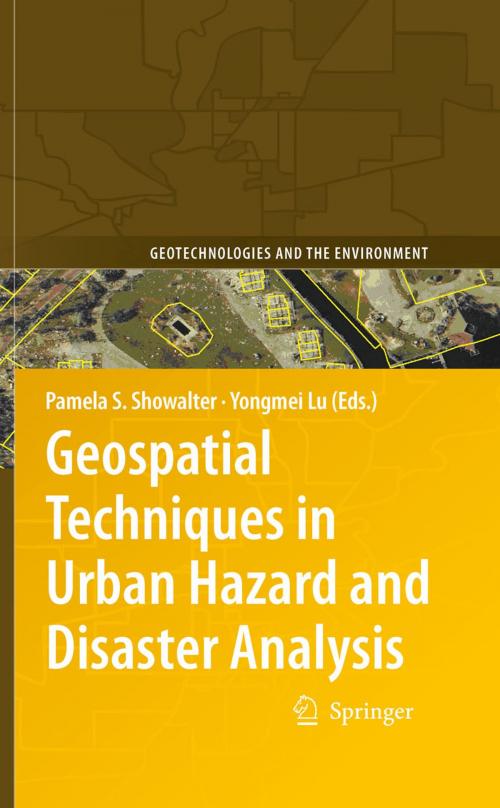Geospatial Techniques in Urban Hazard and Disaster Analysis
Nonfiction, Science & Nature, Nature, Environment, Natural Disasters, Science, Earth Sciences, Geography| Author: | ISBN: | 9789048122387 | |
| Publisher: | Springer Netherlands | Publication: | November 11, 2009 |
| Imprint: | Springer | Language: | English |
| Author: | |
| ISBN: | 9789048122387 |
| Publisher: | Springer Netherlands |
| Publication: | November 11, 2009 |
| Imprint: | Springer |
| Language: | English |
This book is the second in a series that examines how geographic information te- nologies (GIT) are being implemented to improve our understanding of a variety of hazard and disaster situations. The main types of technologies covered under the umbrella of GIT, as used in this volume, are geographic information systems, remote sensing (not including ground-penetrating or underwater systems), and global po- tioning systems. Our focus is on urban areas, broadly de ned in order to encompass rapidly growing and densely populated areas that may not be considered “urban” in the conventional sense. The material presented here is also unabashedly applied – our goal is to provide GIT tools to those seeking more ef cient ways to respond to, recover from, mitigate, prevent, and/or model hazard and disaster events in urban settings. Therefore, this book was created not only with our colleagues in the academic world in mind, but also for hazards professionals and practitioners. We also believe graduate students will nd the material presented here of interest, as may upper division undergraduate students.
This book is the second in a series that examines how geographic information te- nologies (GIT) are being implemented to improve our understanding of a variety of hazard and disaster situations. The main types of technologies covered under the umbrella of GIT, as used in this volume, are geographic information systems, remote sensing (not including ground-penetrating or underwater systems), and global po- tioning systems. Our focus is on urban areas, broadly de ned in order to encompass rapidly growing and densely populated areas that may not be considered “urban” in the conventional sense. The material presented here is also unabashedly applied – our goal is to provide GIT tools to those seeking more ef cient ways to respond to, recover from, mitigate, prevent, and/or model hazard and disaster events in urban settings. Therefore, this book was created not only with our colleagues in the academic world in mind, but also for hazards professionals and practitioners. We also believe graduate students will nd the material presented here of interest, as may upper division undergraduate students.















